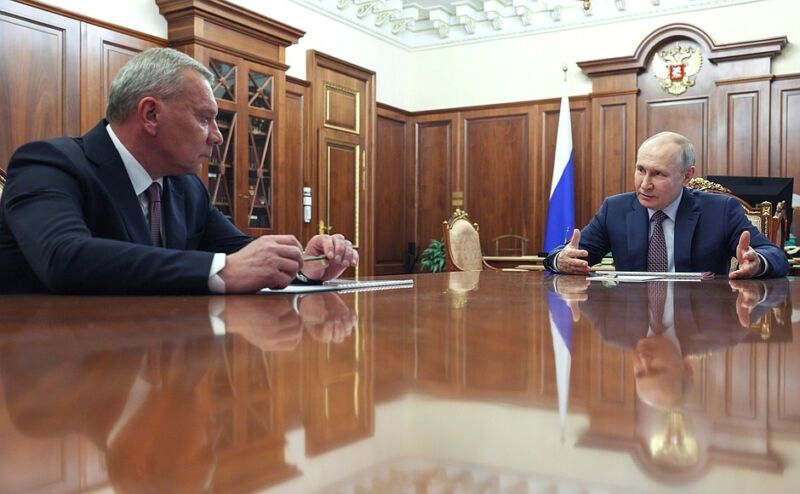
The Kremlin
Russia’s once-vaunted launch industry has been much in decline due to a combination of factors, including an aging fleet of rockets, a reduction in government investment, and the country’s war in Ukraine driving away Western customers.
However, it is has been difficult for the country’s leaders to explain these difficult facts to the Russian people. Russians are justifiably proud of their country’s heritage of space firsts and dominant position in spaceflight. So typically, officials bluster.
This is what Roscosmos chief Yuri Borisov did recently during a lecture at the Tsiolkovsky State Museum of the History of Cosmonautics. Located south of Moscow, this is the world’s first museum devoted solely to spaceflight. Borisov heads the country’s main space corporation, and thus is the leader of the country’s space activities.
Borisov was speaking about the country’s future launch plans to a group of students, cadets, and visitors at the museum. During his remarks, he noted that SpaceX’s Falcon 9 rocket could be used about 10 times. Borisov said Russia’s new Amur-CNG rocket would be capable of much more.
“If the Falcon 9, as a rule, is used more than 10 times, our new methalox first stage will be reusable at least 50 and perhaps up to 100 times,” Borisov said. “That alone will pay for its development cost.” His remarks were reported by the state-operated TASS news service and translated for Ars by Rob Mitchell.
Playing to an audience
This clearly was a message intended to placate an audience that must be wondering why SpaceX has launched three dozen rockets so far in 2024, whereas Russia has mustered just half a dozen. However, Borisov’s claims fall well short of reality.
Rather than 10 launches of a first stage, SpaceX in fact just flew a Falcon 9 rocket for the 20th time. Russia has never reused a rocket’s first stage.
As for the Amur-CNG rocket, with the CNG standing for its propellant compressed natural gas, this remains a paper rocket. Russia has been talking publicly about this booster for four years now, saying it would be capable of lofting 10.5 metric tons to low-Earth orbit for just $22 million. This would offer a competitive alternative to the Falcon 9—if it existed.
However, it does not. Back in 2020, Russian officials said Amur would debut in 2026. Recently, however, Borisov indicated that its debut would slip to 2028 or 2029. Anyone who follows the launch industry will well know what that means. Amur hardware does not exist, and all plans regarding its development are notional. It may well never exist.
Even assuming a debut by something like 2030, recall that it took SpaceX more than five years after the debut of the Falcon 9 to land a first stage rocket successfully. It took another five years for the company, which is known for moving fast, to begin reusing first stages frequently. Finally, it took 14 years for the first Falcon 9 rocket to be flown 20 times. So if Russia debuts the Amur vehicle in the next five years, we might, under the best of circumstances, expect Roscosmos to fly a stage 20 times by the mid-2040s.
The Angara experience
There is another reason to have serious doubts about the development of Amur, especially as Russia devotes much of its resources to fighting a war against Ukraine. (Indeed, it appears that Russia is recruiting soldiers for the war from Roscosmos). This is because of the experience with the Angara rocket.
Shortly after the breakup of the Soviet Union, the Russian government approved the development of the Angara rocket in 1992. The first test flight did not happen until 2014, and as of earlier this month, it was still conducting test flights rather than carrying meaningful payloads into orbit.
So if it took Roscosmos three decades to design, build, and test the Angara rocket, which is fairy conventional, how long might it take to develop the more innovative Amur vehicle with a capacity for vertical landings and reuse?




















+ There are no comments
Add yours